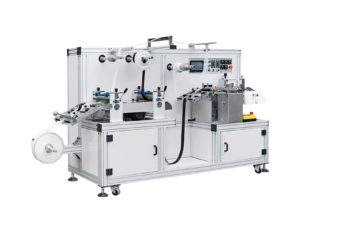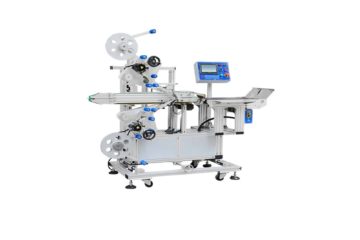The slitting machine can be roughly divided into three ways in the slitting process: flat knife slitting, round knife slitting, and extrusion slitting.
Just like a razor, a single-sided blade or a double-sided blade is fixed on a fixed blade holder, and the knife is dropped during the running of the material, so that the knife cuts the material longitudinally to achieve the cutting purpose.
One is slitting and slitting; the other is hanging slitting.
The grooving slitting is when the material is run on the sipe roller, the cutter is dropped in the groove of the sipe roller, and the material is longitudinally cut. At this time, the material has a certain wrap angle in the sipe roller, and the drift phenomenon is not easy to occur. When the PP film or the narrower edge film is slit and cut, the slitting method is often used to improve the slitting efficiency. However, for the hanging and slitting, its disadvantage is that it is inconvenient to the knife.
Suspended slitting is when the material passes between two rolls, the razor falls to cut the material longitudinally. At this time, the material is in a relatively unstable state, so the cutting accuracy is slightly worse than the cutting, but the cutting is slightly different. The method is convenient for the knife and easy to operate. The flat cutter is mainly suitable for slitting thin plastic films and composite films.
Round knife slitting
Circular knife slitting can be divided into tangential slitting and non-tangential slitting.
The tangential slitting is to cut the material from the tangential direction of the upper and lower disc knives. This slitting is convenient for the knives. The upper disc knives and the lower disc knives can be easily adjusted directly according to the slitting width requirements. Its shortcoming is that the material is easy to drift at the slitting, so the accuracy is not high, and it is generally not used now.
The non-tangential slitting is that the material and the lower disc cutter have a certain wrap angle, and the lower disc cutter falls to cut the material. This slitting method can make the material less prone to drift and high cutting precision. However, the adjustment of the knife is not very convenient. When the lower disc cutter is installed, the entire shaft must be removed. Round knife slitting is suitable for slitting thick composite membranes and paper sheets.
Extrusion slitting
Extrusion slitting is not common in domestic slitting machines. It is mainly composed of pneumatic knives that are synchronized with the material speed and have a certain angle of the bottom roller and easy adjustment. This slitting method can not only cut thin plastic films, but also cut thick paper, non-woven fabrics, and the like. It is a convenient way to cut. It is a development direction of the slitting machine. The slitting machine can be roughly divided into three ways in the slitting process: flat knife slitting, round knife slitting, and extrusion slitting.
Flat knife slitting
Just like a razor, a single-sided blade or a double-sided blade is fixed on a fixed blade holder, and the knife is dropped during the running of the material, so that the knife cuts the material longitudinally to achieve the cutting purpose.
There are two ways to cut the razor:
One is slitting and slitting; the other is hanging slitting.
The grooving slitting is when the material is run on the sipe roller, the cutter is dropped in the groove of the sipe roller, and the material is longitudinally cut. At this time, the material has a certain wrap angle in the sipe roller, and the drift phenomenon is not easy to occur. When the PP film or the narrower edge film is slit and cut, the slitting method is often used to improve the slitting efficiency. However, for the hanging and slitting, its disadvantage is that it is inconvenient to the knife.
Suspended slitting is when the material passes between two rolls, the razor falls to cut the material longitudinally. At this time, the material is in a relatively unstable state, so the cutting accuracy is slightly worse than the cutting, but the cutting is slightly different. The method is convenient for the knife and easy to operate. The flat cutter is mainly suitable for slitting thin plastic films and composite films.
Round knife slitting
Circular knife slitting can be divided into tangential slitting and non-tangential slitting.
The tangential slitting is to cut the material from the tangential direction of the upper and lower disc knives. This slitting is convenient for the knives. The upper disc knives and the lower disc knives can be easily adjusted directly according to the slitting width requirements. Its shortcoming is that the material is easy to drift at the slitting, so the accuracy is not high, and it is generally not used now.
The non-tangential slitting is that the material and the lower disc cutter have a certain wrap angle, and the lower disc cutter falls to cut the material. This slitting method can make the material less prone to drift and high cutting precision. However, the adjustment of the knife is not very convenient. When the lower disc cutter is installed, the entire shaft must be removed. Round knife slitting is suitable for slitting thick composite membranes and paper sheets.
Extrusion slitting
Extrusion slitting is not common in domestic slitting machines. It is mainly composed of pneumatic knives that are synchronized with the material speed and have a certain angle of the bottom roller and easy adjustment. This slitting method can not only cut thin plastic films, but also cut thick paper, non-woven fabrics, and the like. It is a convenient way to cut. It is a development direction of the slitting machine.


